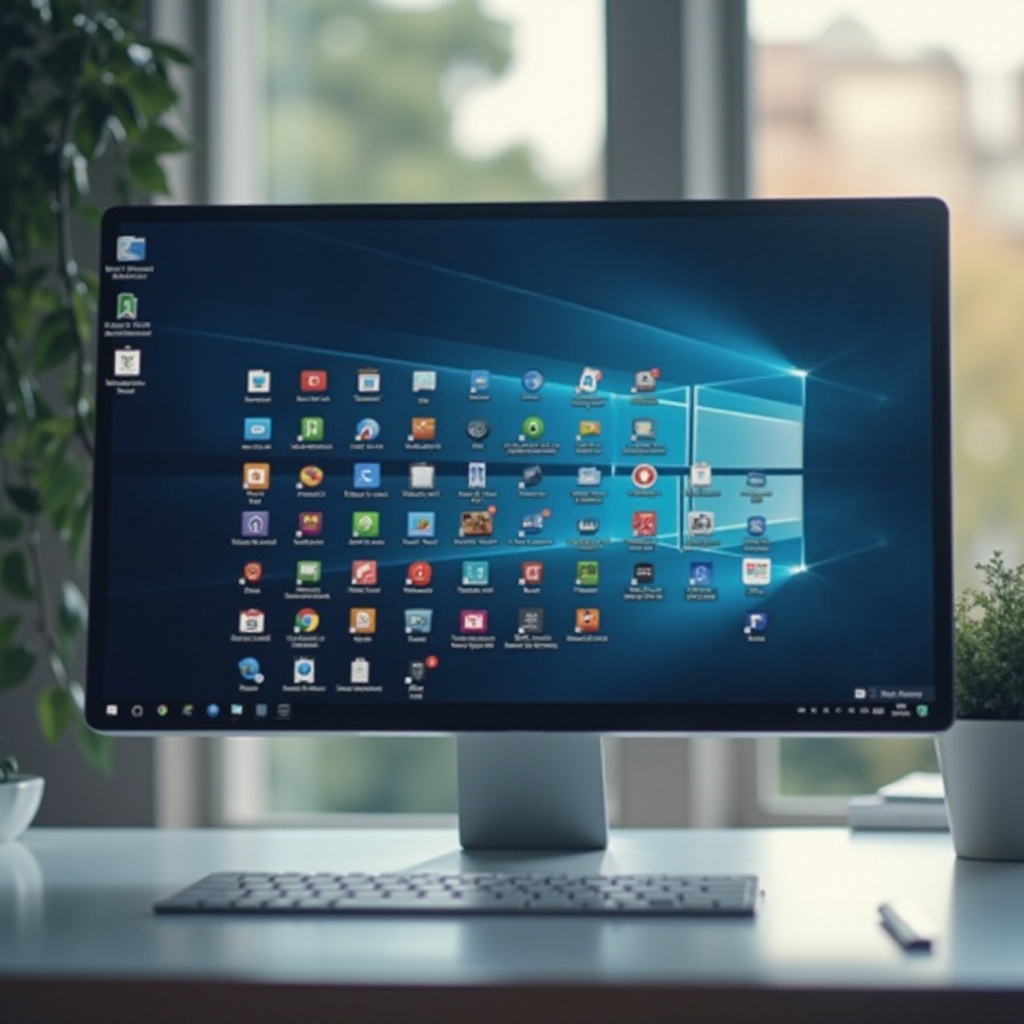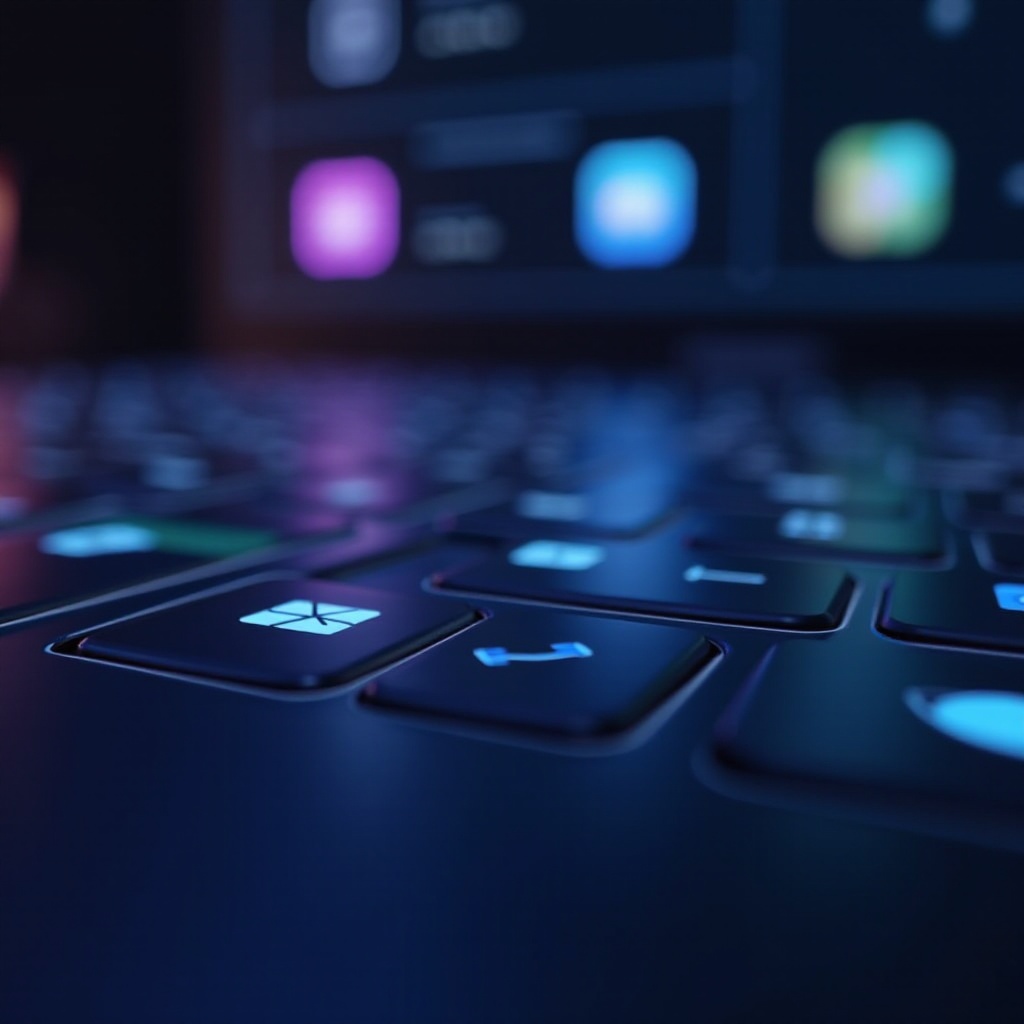Introduction
Managing desktop icons can sometimes be a hassle, especially when they keep moving around without your consent. A tidy desktop not only enhances your productivity but also reduces the time you spend searching for files and shortcuts. In this guide, we’ll cover essential tips and methods to ensure your desktop icons stay exactly where you want them. From built-in Windows options to advanced tweaks and third-party solutions, we’ve got you covered.

Why Do Desktop Icons Move?
Desktop icons move for various reasons, causing frustration for many users. Some primary culprits include:
- Screen Resolution Changes: Icons shift when you switch between monitors of different resolutions or change your screen resolution settings.
- Auto Arrange Features: Windows’ auto-arrange feature can sometimes cause icons to reposition themselves if this option is active.
- System Updates: Updates or software installations may reset your desktop layout.
- Accidental Dragging: Sometimes, we unintentionally drag icons while navigating the desktop.
Understanding these causes can help you effectively prevent such behavior through appropriate solutions.
Fixing the Issue Using Built-in Windows Options
Several built-in options in Windows can help you maintain your desktop icon arrangement. Let’s explore:
Utilizing Auto Arrange and Align to Grid
Windows offers features like Auto Arrange and Align to Grid to manage desktop icon placement:
- Auto Arrange Icons:
- Right-click on your desktop.
- Navigate to the ‘View’ option.
-
Ensure ‘Auto arrange icons’ is unchecked.
-
Align Icons to Grid:
- In the ‘View’ menu, check ‘Align icons to grid.
These steps keep your icons aligned neatly without repositioning them unintentionally.
Using Display Settings
Icon movement issues may also arise from display settings:
- Change Display Resolution:
- Right-click on your desktop and select ‘Display settings.
-
Adjust the resolution to the recommended setting.
-
Orientation Adjustment:
- Ensure multiple monitors are arranged correctly in ‘Display settings’ under the ‘Multiple displays’ section.
Proper adjustment here ensures the icons stay stable on your desktop.
Transitioning from built-in methods to more advanced solutions, let’s delve into methods that offer deeper control and reliability.
Advanced Methods to Prevent Icon Movement
For some users, the basic methods might not be sufficient. Advanced tweaks can provide a more robust solution:
Group Policy Editor Method
This method is available for users with Windows Pro or Enterprise editions:
- Open Group Policy Editor:
-
Press
Win + R, typegpedit.msc, and hit Enter. -
Navigate to User Configuration:
-
Go to ‘User Configuration > Administrative Templates > Desktop.
-
Enable Group Policy:
- Find and double-click ‘Desktop Settings: Disable Changing Desktop Icons.
- Set it to ‘Enabled’ and apply the changes.
Windows Registry Tweak
A powerful but risky method involves editing the Windows Registry:
- Open the Registry Editor:
-
Press
Win + R, typeregedit, and hit Enter. -
Navigate to HKCU Key:
-
Go to
HKEY_CURRENT_USER > Software > Microsoft > Windows > CurrentVersion > Policies > Explorer. -
Create a NoSaveSettings Key:
- Right-click and create a new
DWORD (32-bit)value namedNoSaveSettingsand set its value to1.
Editing the Registry should be approached cautiously, as incorrect changes can potentially cause system issues.
After exploring advanced methods, let’s introduce some practical third-party solutions designed to keep your desktop icons in place effectively.

Third-Party Solutions for Consistent Icon Layout
There are several third-party software solutions designed specifically for maintaining desktop icon layouts.
Review of Popular Software
Some trusted tools include:
- DesktopOK: A lightweight application to save and restore icon positions.
- Fences by Stardock: Offers advanced organization features and desktop customization.
- IconRestorer: Primarily focuses on saving desktop layouts and restoring them with one click.
How to Use These Tools Effectively
- Install the Tool:
- Download and install your chosen tool from a reputable source.
- Save Icon Layouts:
- Use the software to save your current desktop icon arrangement.
- Restoring Layout:
- If icons move, you can quickly restore the saved layout using the tool’s interface.
These solutions offer a convenient way to ensure your icons remain where you placed them.
Ensuring a consistent desktop icon layout requires not just immediate fixes but also ongoing practices. Here are some long-term tips.
Tips for Maintaining Your Desktop Icon Arrangement Long-Term
Maintaining a consistent desktop icon layout involves proactive measures:
- Regularly Save Icon Layouts:
- Use built-in options or third-party tools to save your layout periodically.
- Avoid Frequent Resolution Changes:
- Limit changes in display settings to maintain icon positions.
- Organize Icons Properly:
- Group related icons together in sections to minimize clutter.
By following these practices, you ensure a neat and stable desktop environment over time.

Conclusion
A tidy, stable desktop boosts productivity and usability. By leveraging built-in Windows options, advanced methods, and third-party tools, you can prevent your desktop icons from moving. Implement these strategies, and enjoy a more organized workspace.
Frequently Asked Questions
Why do my desktop icons keep moving after a restart?
Most commonly, this happens due to resolution changes, updates, or auto-arrange features. Using methods like the Group Policy Editor or third-party tools can help in retaining the positions.
Can I lock my desktop icons in place?
Yes, you can lock desktop icons using built-in features like ‘Align icons to grid’ or through advanced methods such as the Group Policy Editor and specific third-party applications designed for this purpose.
Are third-party tools safe to use for managing desktop icons?
Generally, third-party tools are safe when downloaded from reputable sources. Always check reviews and ensure the software is frequently updated to protect against security risks.
